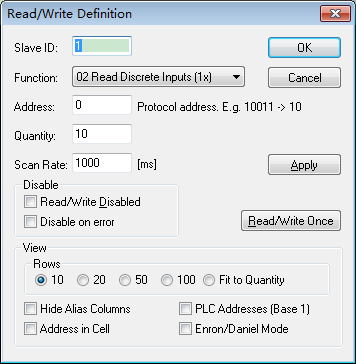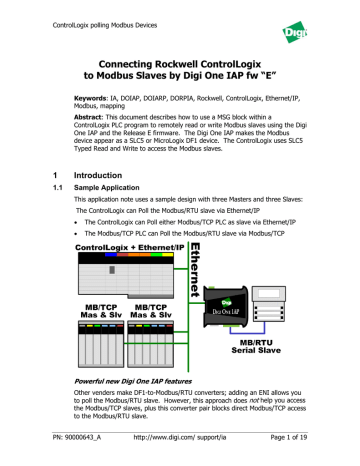
- #Problem communicating with modbus poll slave how to
- #Problem communicating with modbus poll slave serial
- #Problem communicating with modbus poll slave full
Sometimes these delays are non-linear throughout the message, which can cause real problems for many protocols. Phone lines as well as wireless modems introduce delays in messages. Modbus has excelled in these applications because of the small number of timing constraints in the protocol.

There are a number of standards for both phone lines and for wireless. The difficulty comes when the site is multi-vendor and several variations have to be combined on one cable.
#Problem communicating with modbus poll slave how to
The problem is that the physical layer has a number of variations: 2-wire, 4-wire, use of common and variations in drivers and grounding methods.Īnyone who has worked with Modbus on RS-485 from multiple vendors will already know how to manage all the variations when connecting two types in a point-to-point configuration. This worked, but it has caused a few problems in the case of RS-485. In both cases, Modbus did not add any new requirements to these physical layers. RS-232 is for point-to-point, while RS-485 is for multi-drop applications. Recommended Standards (RS) 232 and 485 were established physical layers when Modbus was first developed. Modbus ASCII and RTU both typically use either the RS-232 or RS-485 physical layer, but can also use other physical layers such as phone lines or wireless. However, if the process variable is bad or if the device has problems functioning, there is nothing in the protocol that requires the slave to report this. If the master requests data that does not make sense to the slave, then the slave can send an exception response. There is also no requirement for diagnostics related to the slave’s health.

If the master never talks to them, then they are idle. They simply respond whenever a master talks to them. The slave devices do not “join” the network. The master will record outputs and read in inputs from each of its slaves, during every cycle, as shown in Figure 2.
#Problem communicating with modbus poll slave full
The master has full control of communication on the bus, whereas a slave will only respond when spoken to. The tradeoff is that, because it uses TCP/IP protocol for all messages, it is slow compared to other Ethernet industrial protocols – but still fast enough for monitoring applications.įigure 1: Modbus message frame Figure 1.1: Modbus function codesĪs already noted, Modbus is a simple master-slave protocol. As a result, Modbus TCP/IP is also very simple to implement. There is a bit more to it than that, but this is essentially what Modbus did. One simple way of thinking about Modbus TCP/IP is to picture it as simply encapsulating a Modbus RTU packet within a TCP/IP packet.

In general, RTU is more popular, particularly in new installations. ASCII encodes the message in ASCII characters, while RTU uses bytes, thus increasing the protocol’s throughput. The only difference is in the encoding of the data.
#Problem communicating with modbus poll slave serial

When it was first introduced, it was a proprietary protocol that only Modicon could use. “Simple” is a key descriptor for Modbus – and also its biggest strength. It was originally designed in the mid-1970s by Modicon as a way to link intelligent devices with PLCs using a simple master/slave concept. Modbus is the “granddaddy” of industrial communication protocols.


 0 kommentar(er)
0 kommentar(er)
